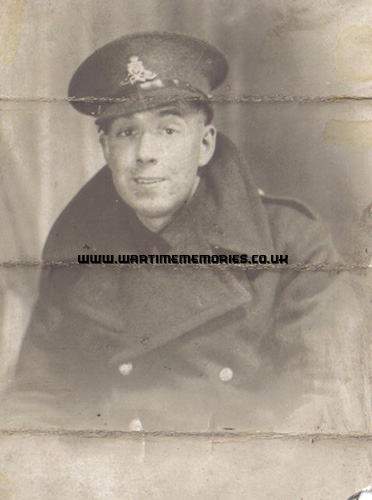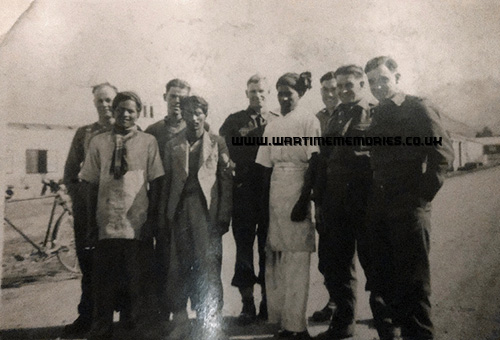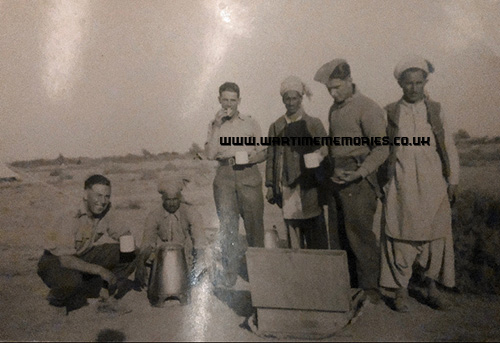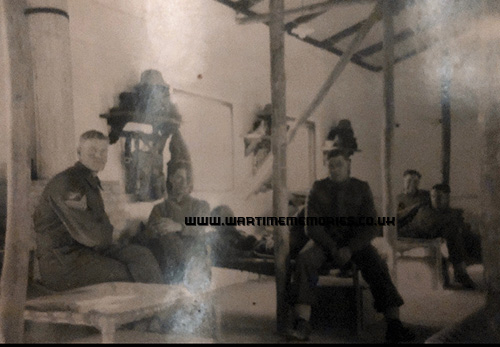|
|
|
Those known to have fought in Siege of Imphal during the Second World War 1939-1945. - Balmer Henry. Pte. (d.5th Jul 1944)
- Barratt Harold Bristow. Pte. (d.25th Feb 1945)
- Hughes Robert Hugh. Gnr.
- Rai VC.. Agansing. Naik.
- Reed George Henry Edward. Sgt.
- Richardson Norman. Pte. (d.23rd Apr 1944)
- Wells MiD.. Raymond Percival. CQMS.
- Wilson Robert Fleming. Sgt. (d.17th Mar 1944)
The names on this list have been submitted by relatives, friends, neighbours and others who wish to remember them, if you have any names to add or any recollections or photos of those listed,
please
Add a Name to this List
|
|
|
The Wartime Memories Project is the original WW1 and WW2 commemoration website.
Announcements
- The Wartime Memories Project has been running for 24 years. If you would like to support us, a donation, no matter how small, would be much appreciated, annually we need to raise enough funds to pay for our web hosting and admin or this site will vanish from the web.
- 27th April 2024 - Please note we currently have a huge backlog of submitted material, our volunteers are working through this as quickly as possible and all names, stories and photos will be added to the site. If you have already submitted a story to the site and your UID reference number is higher than 264001 your information is still in the queue, please do not resubmit, we are working through them as quickly as possible.
- Looking for help with Family History Research?
Please read our Family History FAQ's
- The free to access section of The Wartime Memories Project website is run by volunteers and funded by donations from our visitors. If the information here has been helpful or you have enjoyed reaching the stories please conside making a donation, no matter how small, would be much appreciated, annually we need to raise enough funds to pay for our web hosting or this site will vanish from the web.
If you enjoy this site
please consider making a donation.
Want to find out more about your relative's service? Want to know what life was like during the War? Our
Library contains an ever growing number diary entries, personal letters and other documents, most transcribed into plain text. |
|
We are now on Facebook. Like this page to receive our updates.
If you have a general question please post it on our Facebook page.
Wanted: Digital copies of Group photographs, Scrapbooks, Autograph books, photo albums, newspaper clippings, letters, postcards and ephemera relating to WW2. We would like to obtain digital copies of any documents or photographs relating to WW2 you may have at home. If you have any unwanted
photographs, documents or items from the First or Second World War, please do not destroy them.
The Wartime Memories Project will give them a good home and ensure that they are used for educational purposes. Please get in touch for the postal address, do not sent them to our PO Box as packages are not accepted.
World War 1 One ww1 wwII second 1939 1945 battalion
Did you know? We also have a section on The Great War. and a
Timecapsule to preserve stories from other conflicts for future generations.
|
|
Want to know more about Siege of Imphal? There are:143 items tagged Siege of Imphal available in our Library There are:143 items tagged Siege of Imphal available in our Library 
These include information on officers, regimental histories, letters, diary entries, personal accounts and information about actions during the Second World War. |
|
Gnr. Robert Hugh Hughes 8th Medium Regiment, 247th Bty. Royal Artillery. My Grandfather Robin Hughes served in the India Burma Campaign in the 8th Medium Regiment, Royal Artillery attached to the lV Corps. He fought in the battle at Imphal between April and July 1944.
|
Sgt. George Henry Edward Reed 1st Btn. Royal Scots George Reed was sent to India in 1944 on the Queen of Bermuda. He spent time with several Scottish regiments and then joined the Americans under General Slim and Merrill’s Marauders, seeing action at Myitkyina and Imphal and crossing the Irrawaddy.
After the war, he remained in India at the Red Fort in Delhi for the war trials. His claim to fame was that one day when he was in charge of the sentry at the Red Fort, a high-ranking Indian gentleman insisted on being allowed to enter the fort. George was called forward and without any respect told the gentleman to ‘Foxtrot Oscar’. It later transpired that the gentleman in question was the future prime minister of India, Pandit Jawaharlal Nehru.
Many years later, George was attending to his runner beans in the garden when the Red Arrows, returning from an aerobatic display, flew low over the house. In a fright, George dived for the floor and when he opened his eyes he saw that he was surrounded by his beans on trellises. This panicked him into thinking he was back in Burma. It took us ages to calm him down. Like many others he had recurring bouts of malaria over the years.
|
Sgt. Robert Fleming Wilson 2nd Btn. Border Regiment (d.17th Mar 1944) Robert Wilson was the son of John and Ann Wilson of Workington, Cumberland, he enlisted into 5th (Territorial) Battalion, Border Regiment. On 9th of May 1942, he transferred into the 2nd Battalion. He was killed in action on 17th of March 1944 at the age of 32. His name is commemorated on the Rangoon Memorial.
|
Pte. Henry Balmer 2nd Btn. Kings Own Scottish Borderers (d.5th Jul 1944) 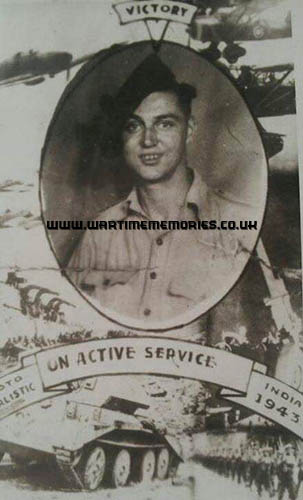 Harry Balmer enlisted on 6th of August 1942 and was allocated directly to the KOSB for basic and infantry training. He arrived in India in July 1943, and after specific jungle warfare training his unit was deployed to the Arakan region of northwest Burma. He saw action at Abel and the Admin Box, receiving field promotions to Lance Corporal then Acting Corporal.
His 7th (Indian) Division was then flown in to reinforce the garrison at Imphal, Manipur, India. Forcing the Japanese to retreat, his unit fought northwards towards Kohima, famously being led into the attack on Kanglatongbi Ridge by two of the battalion pipers.
Following the success of this attack, the KOSB trekked east across country, jungle, paddy fields, and steep mountain ridges, all in heavy monsoon. They arrived below the retreating Japanese stronghold of Uhkrul. Following two days of repelled attacks in which Harry was wounded, the Borderers entered the village virtually unchallenged on the third day, the Japanese having withdrawn overnight. Harry was promoted to 'War Substantive' Corporal during this action.
On 5th July 1944, Harry died from his wounds and was buried in the village. His remains were transferred to Imphal Military Cemetery in December 1944, where, under army regulations, he resumed his rank of Private, the War Substantive element coming into play.
RIP Uncle Harry.
|
Pte. Harold Bristow Barratt 1st Btn. Northamptonshire Regiment (d.25th Feb 1945) Harold Barratt served with the 1st Battalion, The Northamptonshire Regiment. He was the son of Thomas Harold and Mary Barratt of Portobello, Willenhall, Staffordshire.
When you go home
tell them of us and say,
For your tomorrow,
we gave our today.
The British Fourteenth Army was a multi-national force comprising units from Commonwealth countries during World War II. Many of its units were from the Indian Army as well as British units and there were also significant contributions from West and East African divisions within the British Army.
It was often referred to as the "Forgotten Army" because its operations in the Burma Campaign were overlooked by the contemporary press and remained more obscure than those of the corresponding formations in Europe for long after the war. For most of the Army's existence, it was commanded by Lieutenant-General William Slim.
The 1st Battalion Northamptonshire Regiment was a regular army unit that served in the Burma Campaign from July 1942 to April 1945 with the 32nd Indian Infantry Brigade within the 20th Indian Infantry Division.The division was formed at Bangalore in April 1942. It was commanded by Major General Douglas Gracey and at first it consisted of the Indian 32nd, 51st and 53rd Brigades.
In July that year, the 51st and 53rd Brigades were detached to form the Indian 25th Infantry Division and replaced by the Indian 80th Infantry Brigade and Indian 100th Infantry Brigade (the latter brigade being transferred from the 34th Division which had recently disbanded in Ceylon).
The division was intended from the start for operations in jungle and mountain and was on a Mixed Animal and Mechanical Transport establishment for maintenance in rough country.
The division's insignia was a hand wielding a tulwar, in white on black.
After training in Southern India and Ceylon, the Division joined Indian XV Corps at Ranchi in Bihar in December, but from July 1943, it was transferred to IV Corps in Imphal.
At the start of the Battle of Imphal in March 1944, 20th Division was deployed forward to Tamu in the Kabaw Valley. To avoid being cut off, it retreated to the Shenam Saddle in the hills surrounding the Imphal Plain. Because the 17th Indian Infantry Division was in difficulty in its sector, the 32nd Brigade was temporarily detached.
During April and the first part of May, the division held the saddle against attacks by infantry, tanks and heavy artillery. It was then relieved in place and ordered to counter-attack, north-east from Imphal to Ukhrul. The monsoon had broken, and movement was very difficult.
After several Japanese counter attacks, at the start of July the division was transferred to the XXXIII Indian Corps and slowly eliminated large numbers of Japanese in and around the village, which had been made into a Japanese communication and logistic centre.
During the remainder of the monsoon, the division rested around Dimapur. As the monsoon ended, it moved into a bridgehead across the Chindwin River at Kalewa. It attacked southward on the 4th December and cleared Japanese rear guards from Monywa.
On 13th of February 1945, the division made a crossing of the Irrawaddy River 20 miles (32 km) west of Mandalay. The boats used were leaky and other items of equipment already worn out. The first precarious footholds were counter attacked every night for a week but eventually linked up into a solid bridgehead. It was probably during one of these counter attacks that Harold Barratt was killed
He was probably interred initially at the Mandalay cemetery as this was nearest to the place where he fell on the Irrawady River on 25th of Feb 1945.
The graves have been grouped together at Taukkyan to preserve the individuality of these battlefield cemeteries. Burials were also transferred from civil and cantonment cemeteries, and from a few of the isolated jungle and roadside sites.
Taukkyan War Cemetry is the largest of the three war cemeteries in Burma (now Myanmar). It was begun in 1951 for the reception of graves from four battlefield cemeteries at Akyab, Mandalay, Meiktila and Sahmaw, which were difficult to access and could not be maintained. The cemetery now contains 6,374 Commonwealth burials of the Second World War, 867 of them unidentified.
|
Naik. Agansing Rai VC. 2nd Battalion 5th Royal Gurkha Rifles Agansing Rai was a 24 year old Naik in the 2nd Battalion, 5th Royal Gurkha Rifles, when he led his section in an attack on one of two posts which had been taken by the enemy and were threatening the British forces' communications on 26 June 1944 near the town of Bishenpur in the state of Manipur, India. Under withering fire Agansing Rai and his party charged a machine-gun. Agansing Rai himself killed three of the crew. When the first position had been taken, he then led a dash on a machine-gun firing from the jungle, where he killed three of the crew, his men accounting for the rest. He subsequently tackled an isolated bunker single-handed, killing all four occupants. The enemy were now so demoralised that they fled and the second post was recaptured.
|
CQMS. Raymond Percival Wells MiD. 4th Battalion Royal West Kent Regiment 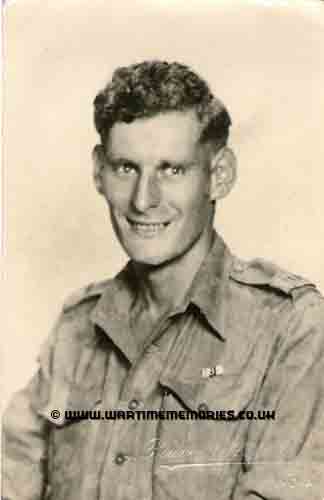 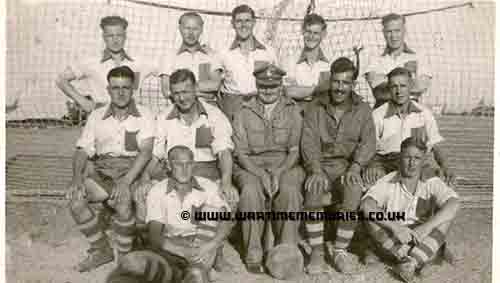 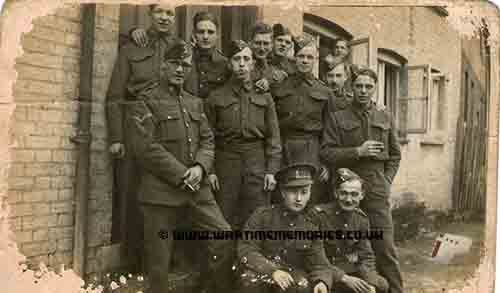  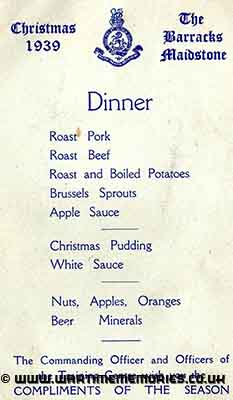 My Grandad was C.Q.M.S. Raymond Wells of the 4th Battalion RWK. He went to France with the BEF in 1940 and also served in Egypt, India and Burma. He fought at the Seige of Imphal and the Battle of Kohima in 1944 and was awarded the Certificate of Gallantry for his actions.
All of his brothers served in WW2, one in the R.A.F - Phil Wells, one in R.A.S.C (General Transport) Don Wells, serving in Italy and North Africa,and his twin brother, Pte.D.C.(Denny) Wells, left the Royal West Kents and joined the 18th Battalion, Reconnaissance Corps. Unfortunately Denny was stationed in Malaya when Singapore fell to the Japanese in 1942, he was captured and held prisoner at Camp No.2 Songkurai, Thailand. He died in 1943. There is a Memorial Plaque in his name at Kanchanaburi (Changi) Military Cemetary, Thailand and another closer to home at Swanley Village Church, Kent, which is where the ashes of my Grandad and Nan, Iris Wells (nee Smith), are too.
The friends he mentions in his letters are: William 'Tiddles' Tyldesley, Don Puplett (Sussex Regt), Ron Peirce, Jack Fordham, Fred Jenns, Hugh Dockerill, Bert Gearing, Harry Lynn, Ernie Nollech (Navy), Neville Exeter, Charlie Newman and Ron Coaty. These were men living in Kent, his closest friends were Roger (who married Mabel) and Tom, I do not know their surnames as I grew up calling them Uncle (but Mabel made the best Flapjacks in the world!).
I know everyone says this but he was the best Grandad in the world, so was my Nan. I am very proud of everything they did in the war, and after!
I would love to hear from anyone who knew of them have many pictures I would love to share and also need information about William (Bill) 'Tiddles' Tyldesley from Bolton (Who my Grandad was looking for and talking about until he died). Please get in touch, would love to get any info possible.
|
Recomended Reading.Available at discounted prices.
|
Forgotten Voices of Burma: The Second World War's Forgotten ConflictJulian Thompson
A remarkable new oral history of the Second World War conflict in Burma
Product Description
From the end of 1941 to 1945 a pivotal but often overlooked conflict was being fought in the South-East Asian Theatre of World War II - the Burma Campaign.
In 1941 the Allies fought in a disastrous retreat across Burma against the Japanese - an enemy more prepared, better organised and more powerful than anyone had imagined. Yet in 1944, following key battles at Kohima and Imphal, and daring operations behind enemy lines by the Chindits, the Commonwealth army were back, retaking lost ground one bloody battle at a time.
Fighting in dense jungle and open paddy field, this brutal campaign was the longest fought by the British Commonwealth in the Second World War. But the troops taking part were a forgotten army, and the story of their remarkable feats and their courage remains largely untold to this day.
The Fourteenth Army in Burma became one of the largest and most diverse armies of th
|
|

|




